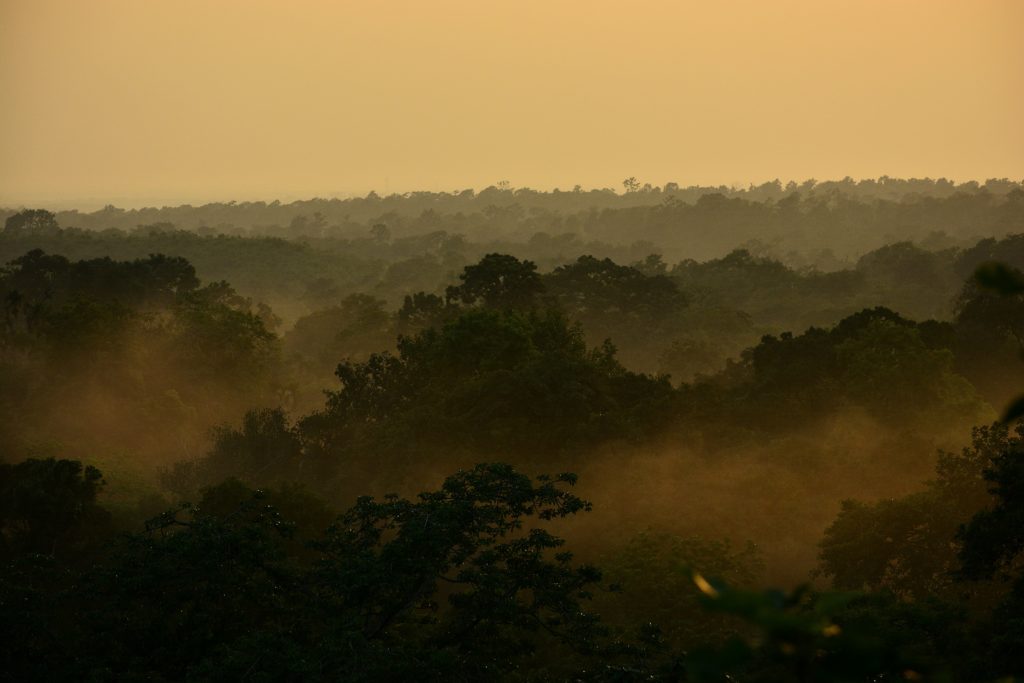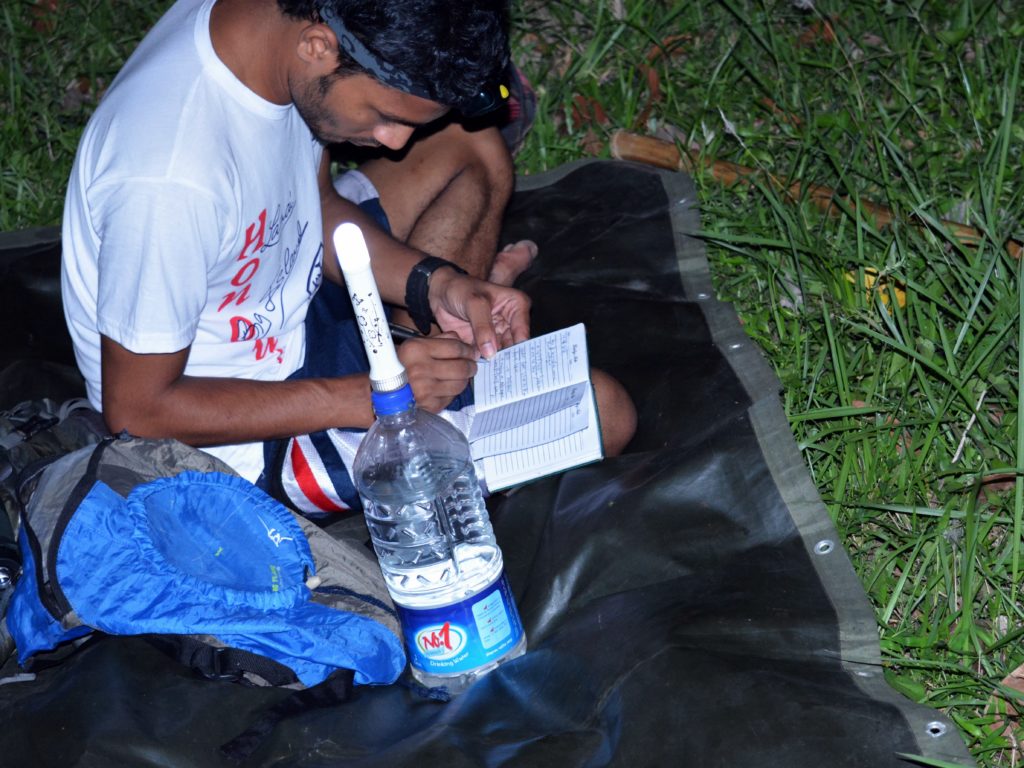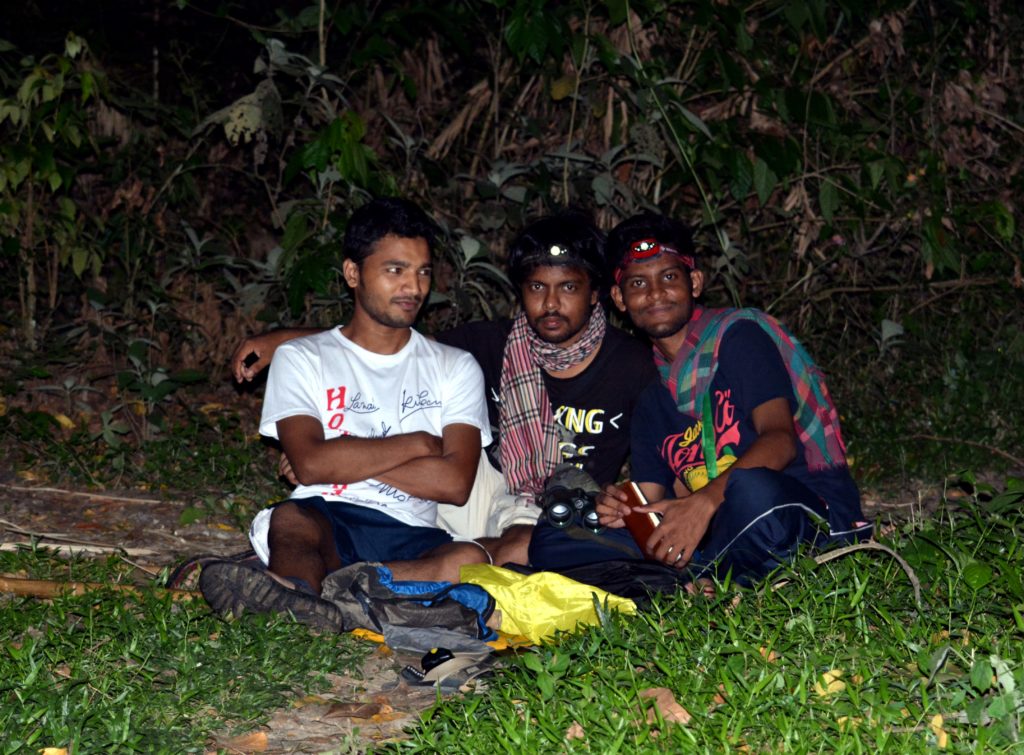Three young people with a headlamp on their head, a large search light in the hand, walking through the trail or dry stream of a semi-evergreen forest. Their eyes on the canopy of the forest, searching a pair of shining eye. When they found a shining eye pair whisper to each other: “Got it! Now we can start our observation”. It is a typical scene of our Loris work. Work in the night is not so easy but for us, it is a pure enjoyment. Working in a semi-evergreen forest do have some risks like fear of venomous snake, wild boar, and of course bad people. But we forget all risks at a blink of an eye when we find a Loris and start data collection. We use the focal animal instantaneous sampling to collect behavioral data. Observing Loris behavior directly in its natural environment is an awesome experience. The person who has not seen a Loris in the wild could not realize the feeling of this. Lorises are so cute! When they walk or climb on a tree branch it seems a doll is moving on the tree!! Sometimes we can observe a Loris for several hours when the visibility is good and canopy height is low. But in maximum cases, it is difficult because semi-evergreen forests are dense and average canopy height is about 20 meter. But we always try to observe a Loris as long time as possible. Sometimes we meet with some other nocturnal animals which have shining eyes e.g. Common Palm Civet, Masked Palm Civet, Small Indian Civet, Large Indian Civet, Leopard Cat etc. These nocturnal animals are also very cute and sometimes they few of them have interaction with Loris. This is the story of our field work on Bengal Slow Loris. But how and why we started this project on this species…
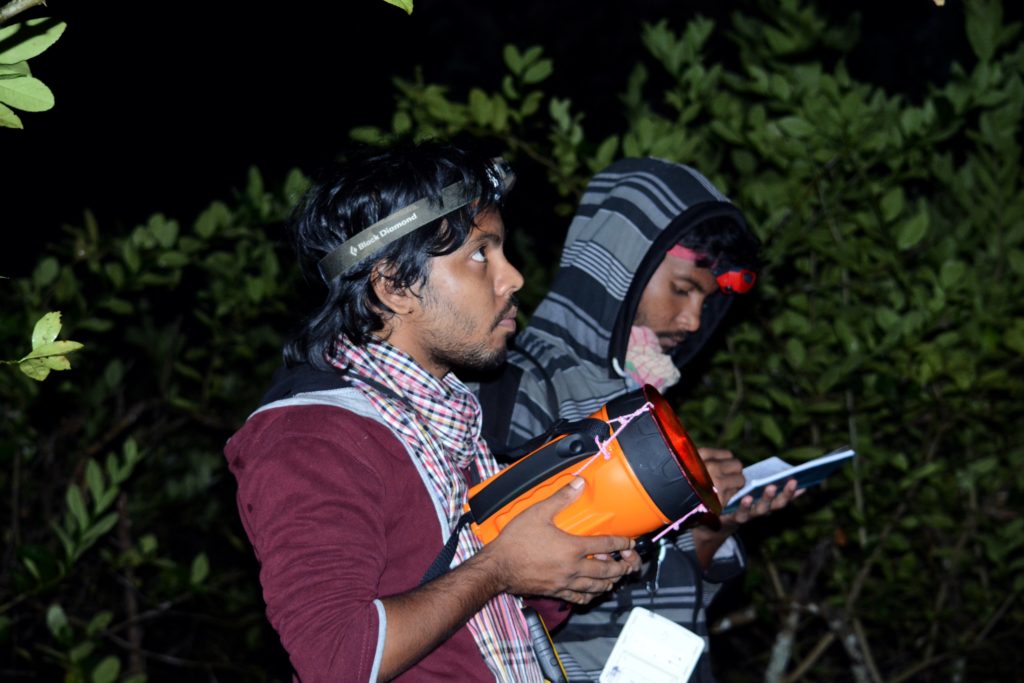
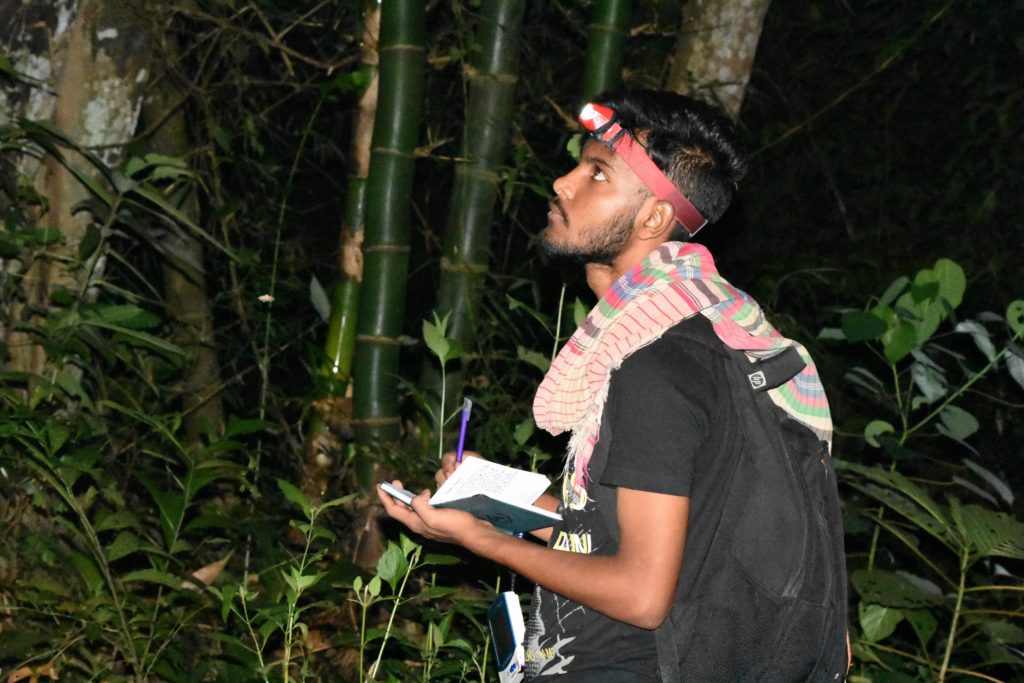
Bangladesh is a small country having an area of 147,570 km² with one of the densest human population, there are 1237 people live per square kilometer in average. Only 9-10% forest of the total amount of land of the country. But we have an amazing biodiversity including 10 species of primates. Bengal Slow Loris (Nycticebus bengalensis) is our only one nocturnal primate among those primates. It is a least studied primate of this country. When we started our work on this little-known species there was no information but some distribution records in Bangladesh. We took the challenge to know the unknown about this species. In June 2015, “Bangladesh Slow Loris Research and Conservation Project” started working to figure out ways of conservation through bio-ecological research of Bengal Slow Loris including population density, behavioral activities, habitat use, feeding habits, associations with other animals, disturbances and fragmentation effects, and other threats. With direct support from Dr. Sabir Bin Muzaffar, the researcher team is working in Satchari National Park (IUCN Category II) of North-eastern Bangladesh close to Tripura of India. The collected information may a great help to conserve and management this poorly known prosimian. Partially Loris related nocturnal animals like Flying Squirrels and Civets will also be benefited conserving this elusive primate in their habitats based on collected data from the project. The young research team hopes to spread their efforts to the remnant Loris occupied areas of entire Bangladesh soon.
Bengal Slow Loris conservation is very important in Bangladesh as well as the entire of its distribution range. Because it is a globally ‘Vulnerable’ species due to more than 30% reduction in population over three generations. However, in Bangladesh, it is inferred that 50% of its population has declined over the last two decades. As a result, the species is considered as ‘Endangered’ in Bangladesh. It is protected according to several wildlife acts within its distribution and included in the CITES Appendix – I. Loris plays a crucial role in forest ecosystem through pollination activities and may control insect populations. Besides population data, their behavioral ecology, roosting, feeding, the evolution of their venom, reproductive strategies, natural history, etc. are very poorly known. Even, due to lacking enough ecological and population data conservation approaches are not being implemented effectively. In Bangladesh, no research has occurred previously on Bengal Slow Loris. So, to know the ecology of this species and conserve it, we started the “Bangladesh Slow Loris Research and Conservation Project”. We hope this project will help the Bengal Slow Loris to survive in the forests of Bangladesh.
- Hassan Al-Razi – Principal Researcher
- Bangladesh Slow Loris Research and Conservation Project

